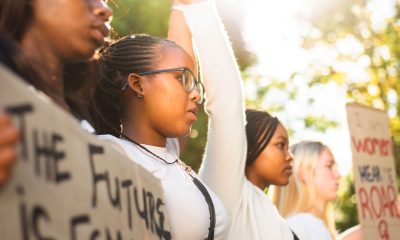Black History
Lucille Times, Who Inspired the Montgomery Bus Boycott, Dies at 100
Lucille Alicia Sharpe was born on April 22, 1921, in Hope Hull, a community outside Montgomery.

Lucille Times, whose encounter with a bus driver in Montgomery, Ala., in June 1955 led her to begin a one-woman boycott of the city’s public transportation, an act of defiance that inspired a mass boycott six months later after another Black woman, Rosa Parks, was charged with defying the same bus driver, died on Aug. 16 at the home of her nephew Daniel Nichols. She was 100.
Mr. Nichols, with whom she had been living for several years, said the cause was complications of Covid-19.
Mrs. Times was driving to the dry cleaners on June 15, 1955, when she got into an altercation with James Blake, the bus driver, who tried to push her car off the road three times. She continued on her errand, but he followed her.
Parking his bus across the street, he ran over to her and yelled, “You Black son of a bitch!” she recalled in a 2017 interview.
She immediately replied, “You white son of a bitch!” and the two started fighting. At one point she bit him on the arm.
Suddenly she felt a blow to her neck. She looked down and saw the high boots of a motorcycle police officer, who had hit her with his flashlight.
The officer took Mr. Blake aside, then turned to her.
“‘Do you know that was a white man you called a white son of a bitch?’” she recalled him saying. “I said, ‘Do you know I’m a Black woman that he called a Black son of a bitch?’”
The officer let her off with a warning, telling her that if she had been a man, he would have “beat my head to jelly,” she said.
Mrs. Times drove away, furious. “My blood was almost boiling,” she said. “I didn’t even take my clothes into the dry cleaners.”
At home her husband, Charlie, had already heard about the incident. Together they called E.D. Nixon, the head of the local N.A.A.C.P. chapter, and asked what they could do. He came over that night.
As a child, she had taken part in a boycott of a butcher shop in Detroit, where she was visiting relatives, and she suggested to Mr. Nixon that the city’s Black community could do the same. He agreed, but said the time wasn’t right — they would need money, cars and other supplies to make it happen. He asked her to have patience.
She called the city bus company to complain, but no one responded. She sent letters to The Montgomery Advertiser and The Atlanta Journal, but they refused to print them. She decided not to wait.
Over the next six months, she operated her own boycott, driving to bus stops and offering free rides to Black passengers waiting to board. Charlie, with whom she ran a cafe across from their house, collected money for gas, and they used the cafe as a planning hub — people could call Charlie to arrange a ride, and he would assemble a schedule for his wife.
“Lucille was loaded for bear, and she wouldn’t back down from nothing,” Mr. Nichols said. “She was full steam ahead.”
On Dec. 1, 1955, Rosa Parks, a seamstress and activist in the Montgomery N.A.A.C.P., boarded Mr. Blake’s bus and sat in the front section, which was reserved for white riders. When he ordered her to move to the back, she refused, and was arrested. Four days later, the Montgomery Improvement Association, formed in coordination with the N.A.A.C.P. and led by a 26-year-old preacher, the Rev. Dr. Martin Luther King Jr., announced a citywide boycott.
The Timeses participated in the boycott, which lasted over a year and helped lead to the end of segregation on the city’s public transportation.
“You’ve got to fight,” Mrs. Times said in 2017. “You don’t get nothing for free. I’ve been a fighter all of my days.”
Lucille Alicia Sharpe was born on April 22, 1921, in Hope Hull, a community outside Montgomery. Her mother, Jamie (Woodley) Sharpe, died when she was young, and Lucille and her five siblings were raised by her father, Walter Sharpe. They later moved to Montgomery, though she lived for stretches of time with relatives in Chicago and Detroit.
She married Charlie Times in 1939 and later received a bachelor’s degree from Huntingdon College in Montgomery. Mr. Times served in the Army Air Corps during World War II, and when he returned, they opened the Times Cafe. It became a social hub for the city’s Black community.
It was also a center for civil rights activism. The Timeses joined the N.A.A.C.P. in the 1940s, and after Alabama outlawed the organization in 1956, they let Mr. Nixon use their home for secret meetings.
The Timeses remained active in the movement, participating in the 1965 march from Selma to Montgomery and hosting 18 other marchers, Black and white, at their home. Mr. Times died in 1978.
Despite her signature role in the origins of the Montgomery Bus Boycott, Mrs. Times was for decades unrecognized for her contribution. Troy King, a former attorney general of Alabama who became friends with her in the 2010s, speculated that it was because her outspokenness ran against the image of civil rights protesters as quiet and reserved.
“She was like an iron fist in a velvet glove,” Mr. King, now in private practice, said in an interview. “She didn’t get pushed around.”
At one point he invited her to speak to his daughter’s fourth-grade class, which was studying Alabama history. Though Mrs. Times had trouble speaking because a stroke had left her vocal cords partially paralyzed, she managed to narrate her tale, peppering it with profanity and racial epithets, shocking students and teachers.
“It was exceptionally jarring, but it left an impression that they will never forget,” Mr. King said.
Mrs. Times did eventually receive some local recognition. In 2007, her house was placed on the Alabama Registry of Landmarks and Heritage, and the state placed historic markers in front of her home and the building that once housed the Times Cafe.
Her neighbors also created a community garden in her honor and named it for her and Mr. Nixon. In April they held a 100th birthday party for her, but she was unable to attend because of the pandemic.
Activism
Oakland Post: Week of November 26 – December 2, 2025
The printed Weekly Edition of the Oakland Post: Week of November 26 – December 2, 2025
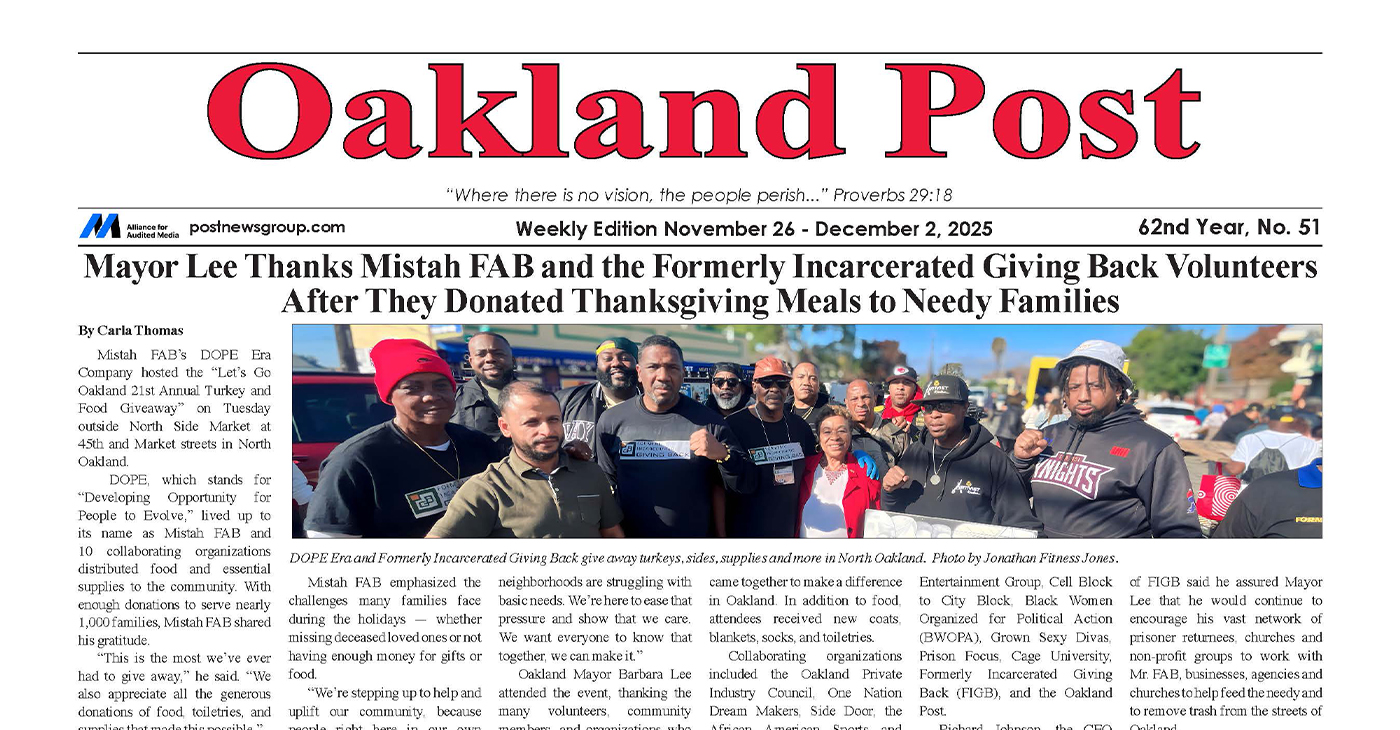
To enlarge your view of this issue, use the slider, magnifying glass icon or full page icon in the lower right corner of the browser window.
Activism
Oakland Post: Week of November 19 – 25, 2025
The printed Weekly Edition of the Oakland Post: Week of November 19 – 25, 2025
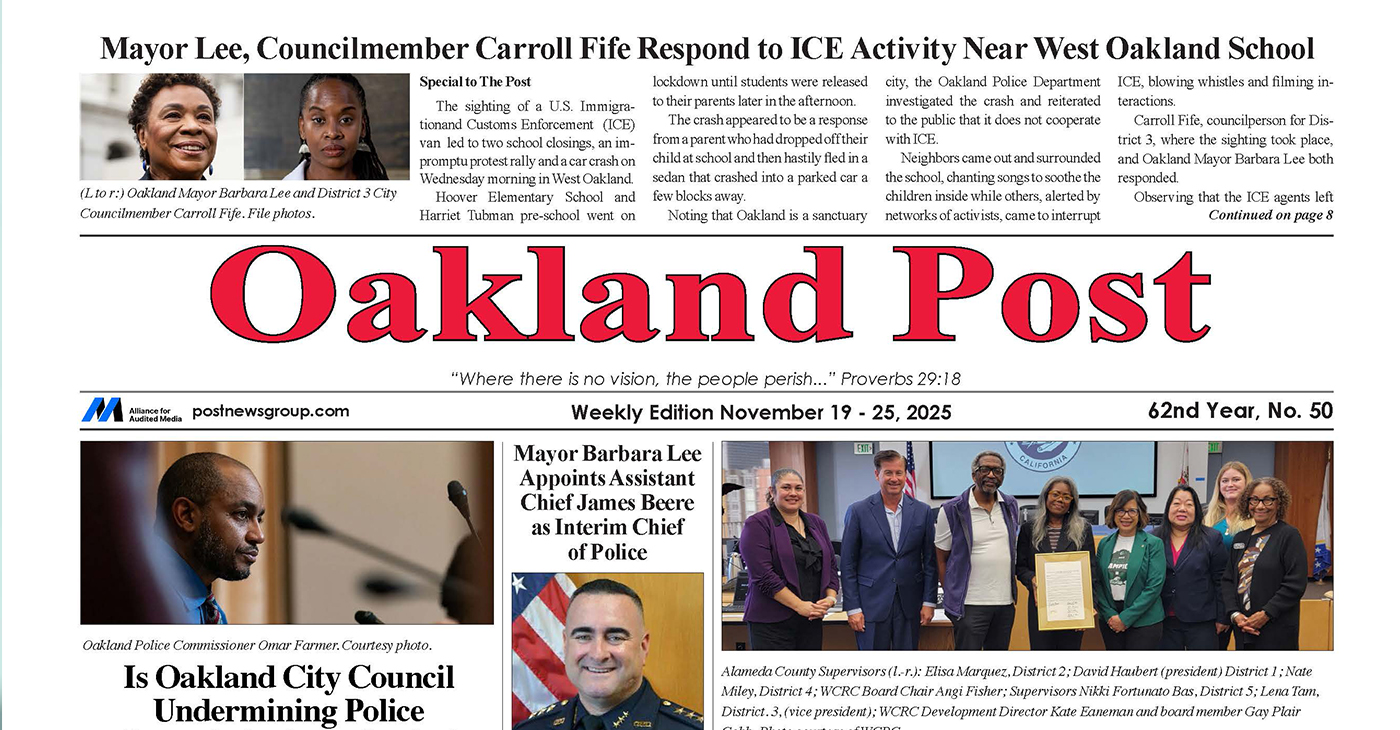
To enlarge your view of this issue, use the slider, magnifying glass icon or full page icon in the lower right corner of the browser window.
Activism
IN MEMORIAM: William ‘Bill’ Patterson, 94
Bill devoted his life to public service and education. In 1971, he became the founding director for the Peralta Community College Foundation, he also became an administrator for Oakland Parks and Recreation overseeing 23 recreation centers, the Oakland Zoo, Children’s Fairyland, Lake Merritt, and the Henry J. Kaiser Convention Center.
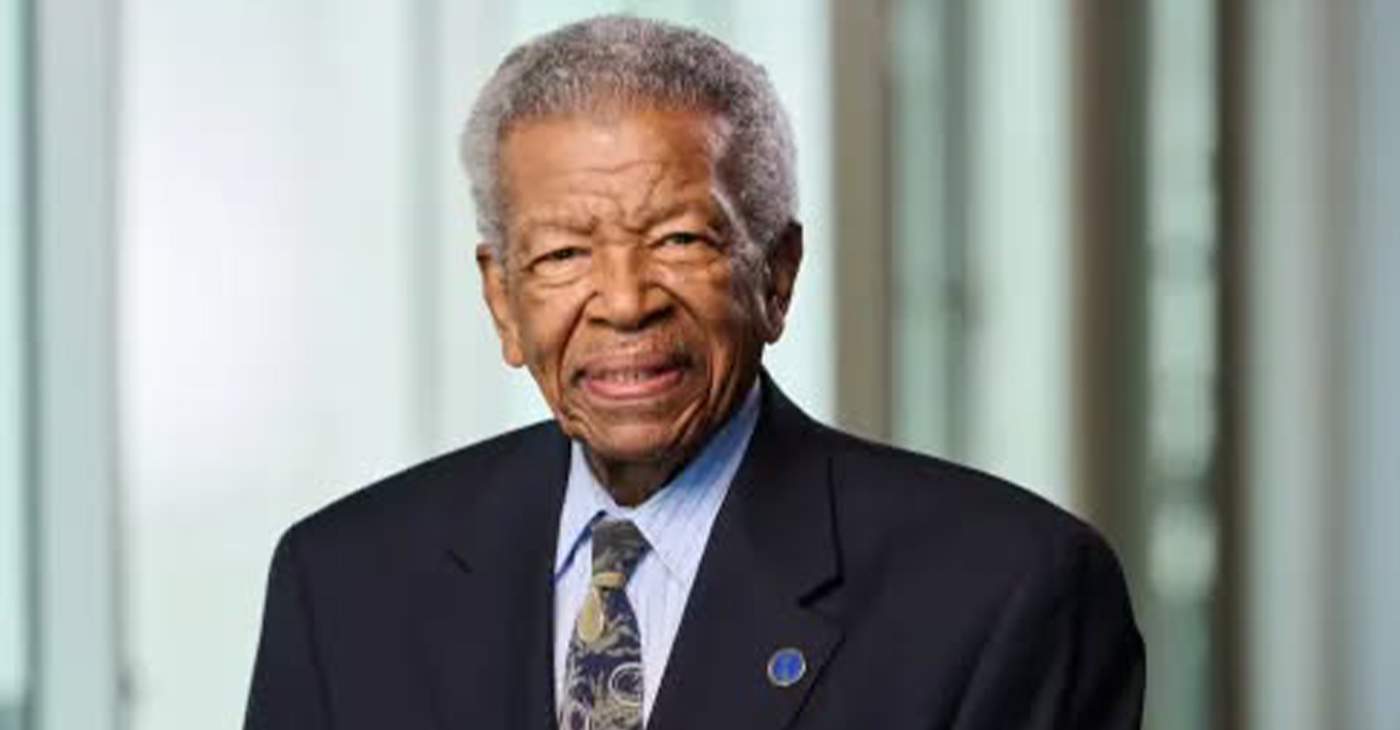
William “Bill” Patterson, 94, of Little Rock, Arkansas, passed away peacefully on October 21, 2025, at his home in Oakland, CA. He was born on May 19, 1931, to Marie Childress Patterson and William Benjamin Patterson in Little Rock, Arkansas. He graduated from Dunbar High School and traveled to Oakland, California, in 1948. William Patterson graduated from San Francisco State University, earning both graduate and undergraduate degrees. He married Euradell “Dell” Patterson in 1961. Bill lovingly took care of his wife, Dell, until she died in 2020.
Bill devoted his life to public service and education. In 1971, he became the founding director for the Peralta Community College Foundation, he also became an administrator for Oakland Parks and Recreation overseeing 23 recreation centers, the Oakland Zoo, Children’s Fairyland, Lake Merritt, and the Henry J. Kaiser Convention Center.
He served on the boards of Oakland’s Urban Strategies Council, the Oakland Public Ethics Commission, and the Oakland Workforce Development Board.
He was a three-term president of the Oakland branch of the NAACP.
Bill was initiated in the Gamma Alpha chapter of Kappa Alpha Psi Fraternity.
In 1997 Bill was appointed to the East Bay Utility District Board of Directors. William Patterson was the first African American Board President and served the board for 27 years.
Bill’s impact reached far beyond his various important and impactful positions.
Bill mentored politicians, athletes and young people. Among those he mentored and advised are legends Joe Morgan, Bill Russell, Frank Robinson, Curt Flood, and Lionel Wilson to name a few.
He is survived by his son, William David Patterson, and one sister, Sarah Ann Strickland, and a host of other family members and friends.
A celebration of life service will take place at Henry J. Kaiser Convention Center (Calvin Simmons Theater) on November 21, 2025, at 10 AM.
His services are being livestreamed at: https://www.facebook.com/events/1250167107131991/
In lieu of flowers, donations can be made to the Euradell and William Patterson scholarship fund TBA.
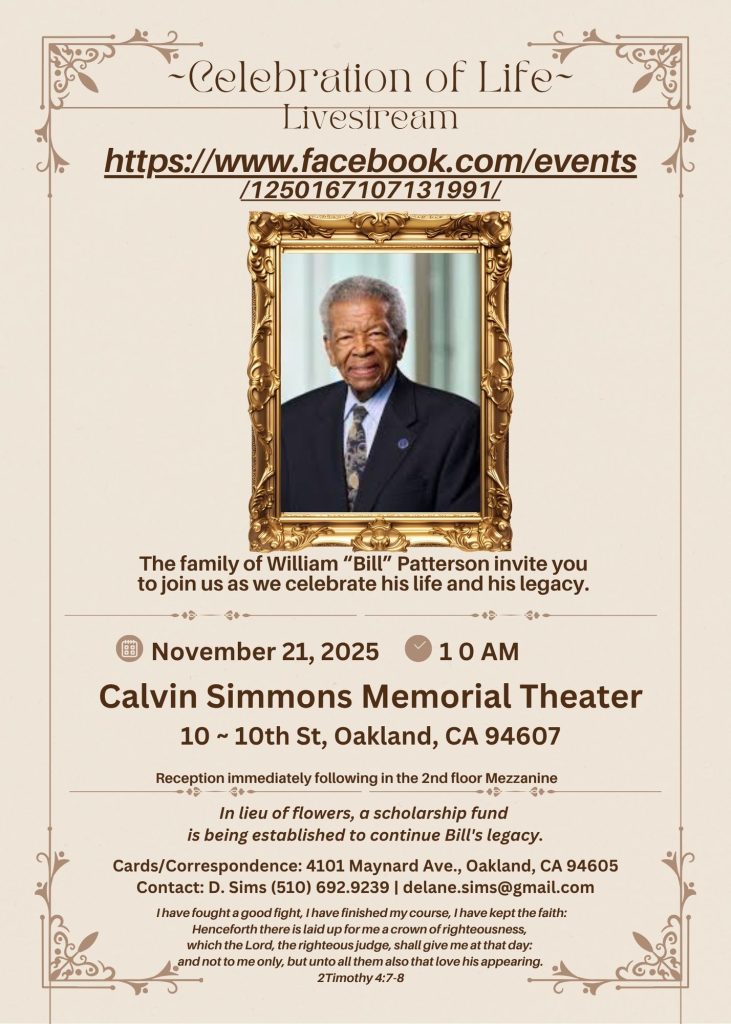
-
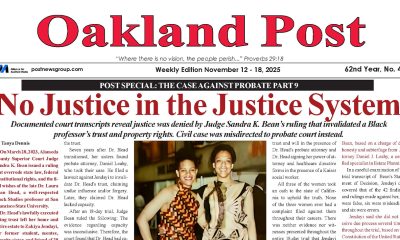
 Activism3 weeks ago
Activism3 weeks agoOakland Post: Week of November 12 – 18, 2025
-

 Activism4 weeks ago
Activism4 weeks agoOakland Post: Week of November 5 – 11, 2025
-
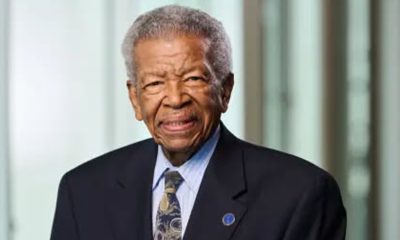
 Activism2 weeks ago
Activism2 weeks agoIN MEMORIAM: William ‘Bill’ Patterson, 94
-

 Activism3 weeks ago
Activism3 weeks agoHow Charles R. Drew University Navigated More Than $20 Million in Fed Cuts – Still Prioritizing Students and Community Health
-

 #NNPA BlackPress3 weeks ago
#NNPA BlackPress3 weeks agoThe Perfumed Hand of Hypocrisy: Trump Hosted Former Terror Suspect While America Condemns a Muslim Mayor
-

 Bay Area3 weeks ago
Bay Area3 weeks agoNo Justice in the Justice System
-

 #NNPA BlackPress3 weeks ago
#NNPA BlackPress3 weeks agoProtecting Pedophiles: The GOP’s Warped Crusade Against Its Own Lies
-

 #NNPA BlackPress2 weeks ago
#NNPA BlackPress2 weeks agoTrump’s Death Threat Rhetoric Sends Nation into Crisis







